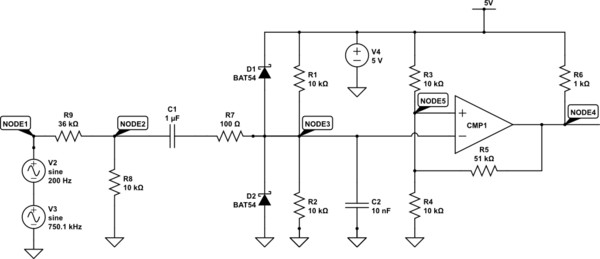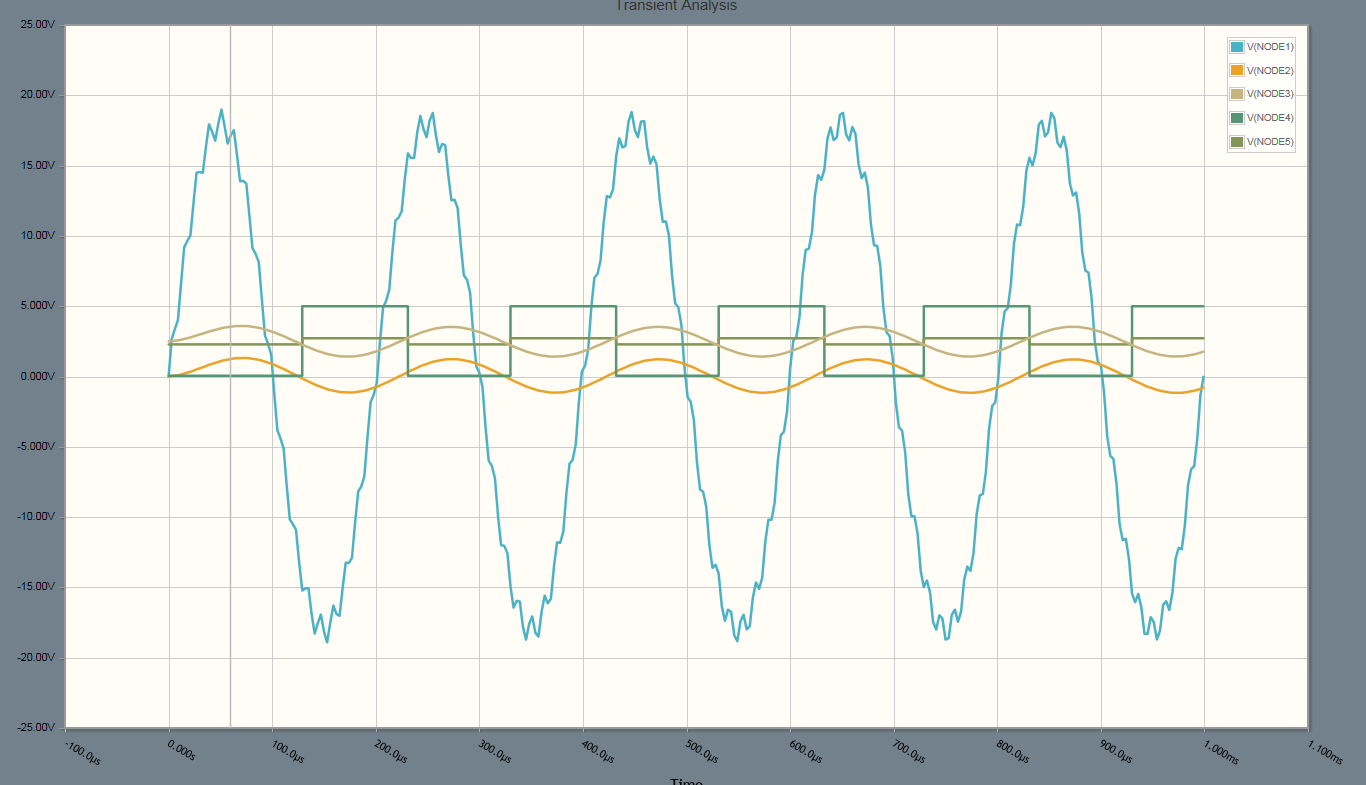Updates after applying Trevor's advice:
I have attenuated the output of the CPS to between 2 and 2.5 volts, as shown in the scope pic:  , channel 2 is the constant "high" output from the schmitt trigger, which is not connected to any input in that screenshot.
, channel 2 is the constant "high" output from the schmitt trigger, which is not connected to any input in that screenshot.
the issue now is that when I connect the trigger input it drops the voltage way down and the scope looks like this:

I have absolutely no idea why it is dropping the voltage so much, any advice on what to change? see Trevor's answer for schematic.
original question below:
I am an ME lost in a EE world... Overall problem is need RPM input from an engine to an arduino for PID control. Went to the shack and picked up some stuff to experiment with. Seems that the LM339 should be able to pickup the peaks of the analog signal from the crank position sensor and output a logic signal that the arduino can count and convert to rpm.
I have referenced the TI datasheet and application guide [see figure 6] in my efforts so far. See attached schematic for my starting point. Also attached the scope reading of the analog signal from the cps.
My question is basically can this work or am I missing some fundamental EE reasoning? Input/advice on resistor values, decoupling caps, and the proper Vref value would also be greatly appreciated.
would not let me post links to the application guide or my search results, found some info on decoupling caps for IC's but not sure how to apply it to my circuit.





